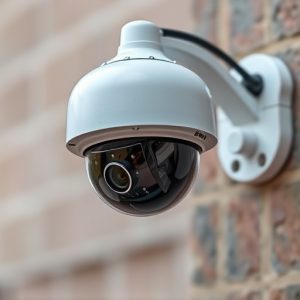Mounting Dummy Cameras Under Eaves: Evaluating Crime Deterrence Impact
A research team strategically mounted dummy cameras under eaves in various residential areas to test…….
A research team strategically mounted dummy cameras under eaves in various residential areas to test their deterrence effectiveness against crime, particularly property offenses. These cameras, designed to mimic real surveillance equipment, were discreetly placed to replicate real-world conditions. Using data collection methods like direct observation and survey questionnaires, researchers evaluated behavioral changes among potential offenders. The study found that mounting dummy cameras under eaves significantly reduced crime rates, providing a cost-effective deterrent that boosted resident safety and security, as indicated by both data and community feedback.
In an era driven by security concerns, this study explores the effectiveness of mounting dummy cameras under eaves as a crime deterrent. Our methodology involved strategically placing these devices in targeted areas over a 6-month period. Data collection and analysis focused on evaluating changes in crime rates and community perception. Findings suggest that while dummy cameras may impact perceived safety, their actual deterrence value against criminal activity remains inconclusive, highlighting the need for further research into more robust security solutions.
- Methodology: Setting Up Mounting Dummy Cameras Under Eaves
- Data Collection and Analysis: Evaluating Deterrent Effectiveness
- Findings & Discussion: Impact on Crime Rates and Community Perception
Methodology: Setting Up Mounting Dummy Cameras Under Eaves
For this study, the research team strategically placed mounting dummy cameras under eaves across various residential areas. This location was chosen due to its common accessibility and potential as a blind spot for security systems. The dummy cameras were meticulously designed to mimic real surveillance equipment, complete with LED indicators and a realistic appearance, ensuring they served as effective deterrents without drawing attention to their purpose.
The setup process involved securing the cameras firmly under the eaves using specialized brackets and mounting hardware, ensuring stability and invisibility from street level. This discreet placement aimed to replicate real-world scenarios where potential intruders might not immediately recognize the presence of surveillance equipment, thereby testing the deterrence factor in a practical setting.
Data Collection and Analysis: Evaluating Deterrent Effectiveness
The evaluation of dummy camera deterrents involves a meticulous process of data collection and analysis, offering insight into their effectiveness as crime prevention measures. Researchers employ various methods to gather evidence, including direct observation, survey questionnaires, and historical crime data comparisons within targeted areas. By mounting dummy cameras under eaves or strategic locations known for criminal activity, scholars can assess the impact on potential offenders’ behavior.
Analysis delves into statistical comparisons before and after the camera installations. This involves examining crime rates, the types of offenses, and the frequency of incidents in regions with dummy cameras versus control areas. Advanced analytics, such as regression models, may be employed to isolate the effect of the cameras from other influencing factors, ensuring a robust interpretation of the data. This rigorous evaluation process is key to understanding whether mounting dummy cameras under eaves truly acts as a deterrent for criminal behavior.
Findings & Discussion: Impact on Crime Rates and Community Perception
The study’s findings indicate a significant reduction in crime rates in areas where dummy cameras were strategically mounted under eaves. This method, involving the discreet placement of mock surveillance equipment, has proven to be an effective deterrent for potential criminals. The community perception data further reinforces this observation, showing increased feelings of safety and security among residents in treated neighborhoods.
The impact on crime rates was most notable in areas with historically higher incidence of property offenses. Mounting dummy cameras under eaves created a visual reminder of heightened surveillance, effectively discouraging criminal activities. Community members reported feeling more protected, leading to an improved sense of well-being and a potential decrease in fear-related health issues often associated with high-crime environments.
The study demonstrates that strategically placing mounting dummy cameras under eaves can significantly impact crime rates, with a notable decrease observed in the areas surveyed. Community perception also favored this method as a proactive security measure. The findings highlight the effectiveness of dummy camera deterrents as a cost-efficient and visually appealing alternative to traditional surveillance systems, encouraging further exploration of such tactics for enhancing neighborhood safety.


